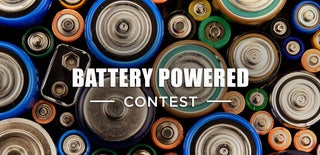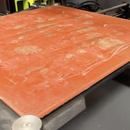Introduction: Mini Lightsaber Challenge
One of my favorite topics to teach my middle school students is electricity. It's incredible that we rely so heavily on electricity in our everyday lives, yet the majority of people don't fully understand what it is, how it works, or how we can create and harness it to power our everyday things.
That being said, a powerful way for students to learn about how we use electricity is by designing and creating simple analog circuits. This lightsaber challenge is a warm up activity to get comfortable with some of the key components of circuits and analog electronics, and it turns out to be a really fun and engaging challenge.
I mean, who doesn't like to wave a light around and make lightsaber noises, right?
Step 1: Materials and Tools
There are endless ways to complete this challenge with countless different combinations of tools that can be used depending on what's readily available and what you're looking to cover. At a minimum, here's what you'll need:
Tools:
- Scissors
- X-Acto Knife / Cutting Mat
- Hot Glue Gun
Materials:
- 1 CR2032 or comparable 3V coin battery
- 1 LED
- 1 Clear Drinking Straw
- Corrugated Cardboard
- Label Paper and or Tape
In addition to these items, I often allow students to apply some of their CAD skills by using our CNC laser to cut their lightsaber frames out of cardboard, though scissors or a x-acto could easily be used instead. And many of my students prefer to design their handles digitally rather than hand drawing them, but either are great options that can be catered to any interest and timeframe!
Step 2: Understanding the Circuit
This is a pretty simple circuit, but there are a few definitions to cover in order to understand what's happening here.
The first, is what is electricity? Electricity is a form of energy resulting from the existence of charged particles (such as electrons or protons), either statically as an accumulation of charge or dynamically as a current. In this instance, we are utilizing the flow of electronics as current to power a load (LED) in our circuit.
Our method of resistance, or control, comes from us pinching the legs of the LED onto the correct side of the coin battery to create a conductive path for the electrons to flow through. As LEDs and batteries are polar, the positive leg of the LED must be touching the positive side of the battery. As the 3V coin battery has an appropriate amount of amps (current flow) for an LED, no additional resistors are needed.
Step 3: Constructing Our Saber Frames
The frame is what will hold the battery and LED together. Construct your frame from the corrugated cardboard using a pair of scissors, x-acto knife, or CNC machine if available.
The size of your frame can vary as long as the hole is large enough for the battery to fit. Our frames have a hole that is 13/16" in diameter and are 1" wide. The length can vary, but we typically make our saber handles about 3" long. In general, we use recycled cardboard that is about 0.15" in thickness.
Step 4: Designing Your Lightsaber
In addition to choosing the LED color and general size, the design of the lightsaber is one of the most open-ended ways to customize your lightsaber. Using the label paper, you can design your lightsaber by drawing right onto the paper, or by creating and printing out a digital design.
For digital designs, my students use Gravit Designer. Gravit is a free and web-based vector-design app that is really similar to Adobe Illustrator or Corel Draw....but works on chromebooks (a must for my room). I have an extensive collection of student ready Gravit tutorial videos on my digital classroom here. If you prefer raster-based design, I recommend Pixlr as a free and web-based photoshop alternative. Check out my Pixlr tutorials here.
After drawing or printing out your lightsaber design, carefully cut it out using scissors or an x-acto knife.
Step 5: Assembling the Lightsaber
To assemble the handle of your lightsaber, complete the following steps:
- Place the battery into the hole of your frame
- Separate the legs of the LED so they will span over the thickness of the cardboard and so they will not be touching the battery unless you pinch them together (this creates a springy button)
- Slide the LED over the top of the frame so the legs are above the battery, and on the appropriate sides for polarity
- Slide the drinking straw over the LED, sometimes it easier to secure it gently in place with some tape
- Wrap your lightsaber design decal over the handle so it pinches the straw in place, but doesn't squeeze the legs onto the battery too tightly (this will cause the lightsaber to always be on)
- Cut the straw to the desired length
At this point, your lightsaber is essentially complete! However there are plenty of ways to personalize and improve its design as discussed in the next step!
Step 6: Customizing and Improving Your Design
As made evident in the Star Wars universe, lightsabers come in many shapes and sizes. There are endless modifications and improvements you can make to your mini lightsaber! Here's just a few:
Super Bright LEDs - The brighter the LED, the more impressive the blade. A shorter straw will also help brighten your lightsaber blade, but don't cut it too short or you will be defenseless!
Capping the Straw - Use a hot glue gun to carefully close the end of your straw (don't use too much, you'll melt the straw). This will make your lightsaber less like a flashlight and more like a laser sword.
Additional LEDs / Blades - Fancy more saber cutting action? Add a second frame and and blade to your saber design to wield a double bladed saber like Darth Maul. Or try stacking multiple LEDs over the battery to create side blades like Kylo Ren!
Step 7: May the Force Be With You!
May the force (in the form of flowing electrons) be with you! I hope you enjoy this mini design challenge as much as my students and use it to craft some epic and unique mini lightsabers of your own!
Thanks for reading and happy making!

Participated in the
Battery Powered Contest













